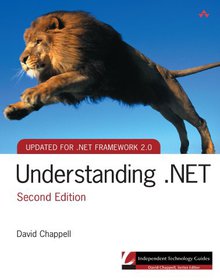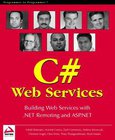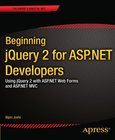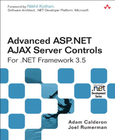Understanding .NET
2nd Edition

Book Details:
| Publisher: | Addison-Wesley Professional |
| Series: | Addison Wesley |
| Author: | David Chappell |
| Edition: | 2 |
| ISBN-10: | 0321194047 |
| ISBN-13: | 9780321194046 |
| Pages: | 317 |
| Published: | May 25 2006 |
| Posted: | Nov 19 2014 |
| Language: | English |
| Book format: | CHM |
| Book size: | 1.67 MB |
Book Description:
Microsoft's .NET is revolutionizing Windows-based software development. Since its initial release in 2002, .NET has changed significantly, becoming the foundation for a new generation of Windows applications. The .NET Framework and Visual Studio, the two core aspects of this initiative, provide a multilanguage environment in which developers can create Web services, graphical user interfaces, and other kinds of applications. Taken as a whole, the .NET technologies have changed the way nearly every Windows application is built. Now fully updated for version 2.0 of the .NET Framework and Visual Basic 2005, Understanding .NET, Second Edition, is a concise guide to the landscape of Windows development. Margin notes, detailed diagrams, and lucid writing make this book easy to read and navigate, while analysis sections explore controversial issues and address common concerns. David Chappell's independent perspective and straightforward descriptions clarify both how the .NET technologies work and how they can be used. Coverage includes An overview of .NET and its goals The Common Language Runtime (CLR) The .NET languages, including C#, Visual Basic, and C++ The .NET Framework class library Building Web Applications with ASP.NET Accessing Data with ADO.NET .NET framework integration with SQL Server 2005 The key to using a new technology is to understand the fundamentals. This book provides the robust foundation developers and technical managers need to make the right decisions and maximize the potential of this revolutionary framework.
Download Link:
Related Books:
Professional C# Web Services
Building .NET Web Services with ASP.NET and .NET Remoting
Web services are perhaps the most important feature of .NET development. They take componentization to a new level by allowing method calls to be made over the Internet or over an intranet using standard protocols such as HTTP and SOAP. This means that the calling application needs to know nothing about the internal implementation of the service - a web service built in C# on the .NET platform will (in theory) be indistinguishable from one built on Linux using Java. The .NET Framework provides two ways to build web services - ASP.NET and .NET Remoting. Unlike most books on web services, this book covers both of these technologies in depth. .NET Remoting web services require a little extra effort to build, but they offer us greater flexibility. They ...
Beginning jQuery 2 for ASP.NET Developers
Using jQuery 2 with ASP.NET Web Forms and ASP.NET MVC
jQuery is the most popular JavaScript library in use today, appearing on nearly two thirds of the10,000 most visited sites on the web. With this sort of popularity, its clear that ASP.NET developers cant afford to miss out. By combining jQuerywith ASP.NET you get the best of both worlds: the client-side interactivity and responsiveness of JavaScript with the robustness and extensibility of Microsoft's web stack. Beginning jQuery 2 for ASP.NET Developers shows you how. To begin with, you'll find out how jQuery hooks up with your ASP.NET controls, and simplifies event handling by keeping it in the browser. Then you'lllearn tohandle dynamic content and responsive layouts byinteracting withthe DOM.Effects and animations are one of the most popular u...
Advanced ASP.NET AJAX Server Controls For .NET Framework 3.5
Microsoft .NET Development Series 'Supported by the leaders and principal authorities of core Microsoft technologies, this series has an author pool that combines some of the most insightful authors in the industry with the lead software architects and developers at Microsoft and the developer community at large.' Don Box Architect, Microsoft 'This is a great resource for professional .NET developers. It covers all bases, from expert perspective to reference and how-to. Books in this series are essential reading for those who want to judiciously expand their knowledge base and expertise.' John Montgomery Principal Group Program Manager, Developer Division, Microsoft 'This foremost series on .NET contains vital information for developers who ...
2007 - 2021 © eBooks-IT.org



